Domestic services
Plumbing ultimate guide
Have a Plumbing Emergency? We’re here to help 24/7/365
Have a Plumbing Emergency? We’re here to help 24/7/365
Household plumbing is something most of us rely on for day-to-day living. Even a few hours without running water or functioning drains can be a serious problem.
By understanding how different parts of your plumbing system work, you will be better able to assess problems and make more informed decisions about how to get the issue resolved. Plumbing issues can range in severity and while it makes sense to hire a licensed professional for most plumbing issues and installations, you can be better prepared if you understand the problem at hand.
It is important to keep in mind that not all plumbing issues can wait. If you are experiencing a plumbing emergency, it is best to contact a licensed professional as soon as possible to avoid any further damage. Learn more about our emergency plumbing services offered at Pace
Every home with plumbing has a supply of cold water coming into the building and a main drain to handle sewage leaving the building. The incoming cold water supply feeds both the cold water taps and tanks, in the loft if you have one as well as the water heater and boiler.
Hot and cold water supply lines extend to most fixtures in your house, with a series of smaller drain pipes leading from sinks, toilets, showers and tubs to the larger main drain. In general, problems with the water supply side of domestic plumbing are usually about leaks of some kind. Drain issues are usually about blockages. Kitchen sinks and toilets are the most likely location for blockages, but all drain pipes can become blocked.
Although major plumbing leaks don’t happen often, when they do, they can cause serious damage in a very short time. That is why every homeowner needs to know where the main water supply shutoff valve is and how to use it. Find the main water supply pipe that enters your house, typically located under the kitchen sink. If your house is in a subdivision, water supply lines usually enter closest to the road. The first valve present on this pipe is the main shutoff. Rotate the handle clockwise until it stops to shut off the flow of water.
Turning off your water supply
For most major leaks you will need a professional plumber to fix the issue, but being able to turn off the water supply beforehand can help to avoid additional damage. It is recommended that everyone in your household know how to shut off the main water supply valve in case of a sudden leak.
Turning off your water supply
For most major leaks you will need a professional plumber to fix the issue, but being able to turn off the water supply beforehand can help to avoid additional damage. It is recommended that everyone in your household know how to shut off the main water supply valve in case of a sudden leak.
With a high concentration of plumbing fixtures, bathrooms are often the source of plumbing issues in your home. Most household toilets, sinks, showers and bath tubs are used frequently so occasional issues are not uncommon. Understanding how these plumbing fixtures work is the first step in understanding what is causing the problem.
Whenever the flush handle of a toilet is pushed down, it opens a flush valve in the bottom of the water tank. This allows water to rush down into the toilet bowl, carrying waste into a large drain pipe to the back of the toilet or hidden in the floor. As the water level in the tank drops during a flush, it opens a fill valve to refill the tank to a preset water level, ready for the next flush. The water that remains in a toilet bowl after flushing seals out sewer gases and prevents them from entering your home.
Components of a toilet includes:
Potential trouble spots for a toilet include the water supply connection to the water tank, the gasket that seals the toilet to the drain, the gasket that seals the tank to the bowl, and the flush valve and fill valve inside the tank.
If you can’t clear a blocked toilet with a plunger, a plumber may be required to use a snake to clear the blockage. Mineral build up inside the bowl of an older toilet can also cause lazy flushing of an otherwise unblocked toilet. Toilet replacement by a licensed plumber is the best option for older toilets that regularly flush poorly.
A leaking flush valve at the bottom of the toilet tank is one common cause of water that keeps running continually into a toilet tank and bowl. A defective or poorly-adjusted fill valve can also allow water to continue filling the tank without stopping. There’s limited risk of water damage involved in these repairs, so some homeowners tackle it themselves. A plumber is also an option.
Even a small water leak from the pipe or hose that connects to the toilet tank is serious because it can develop into a large and damaging leak. The water supply will need to be shut off, the connection repaired, then the water turned back on. Most homeowners require a plumber for this task.
If a leak appears where the toilet tank connects to the back of the bowl, the tank-to-bowl gasket needs to be replaced. The tank will need to be drained and the tank removed from the toilet bowl to install this gasket. Most people hire a plumber for this work.
If water appears where the toilet sits on the floor, a defective toilet ring is probably the cause. Sometimes the water only appears immediately after a flush. The toilet tank will need to be drained, the toilet bowl unbolted from the floor, lifted, a new ring installed, then the toilet and tank replaced. This repair is as complicated as toilet replacement, so most people hire a
Most toilets have a valve on the pipe connected to the toilet tank and shutting off this valve will stop a toilet from overflowing. If your toilet doesn’t have a shutoff valve, shut off the main water supply valve for your house. Don’t turn this valve back on until the toilet blockage is cleared and the toilet bowl is emptying properly.
When you are doing maintenance around your home, be sure to replace the batteries and test both your fire alarm and carbon monoxide detector. This should be done at least twice a year.
These are made differently than sinks and taps in other parts of your house and they have unique repair issues.
Elements of a bathroom basin and taps installation include:
Potential trouble spots for bathroom sinks and taps include defective cartridge or washer, blocked or slow drain, leaking drain, and malfunctioning drain stopper
These are usually replaced as part of a bathroom renovation or cabinet replacement. Bathroom sinks can be a molded part of the cabinet top, they can be under-mounted to the bottom face of the countertop or they can be mounted on top of the top resting in a hole cut on site during installation. You’ll need to get your plumber involved early on in your bathroom renovations to determine if pipe and drain locations need to be changed.
Cartridge or washer needs to be replaced. Handy homeowners can do this work themselves, but older taps often have corroded parts that can break during removal. Stop and call a plumber if you can’t get things to come apart. Some Taps manufacturers offer free replacement cartridges or even free replacement taps. Call customer service before you buy any repair parts.
This is a common bathroom basin problem because soap products and loose hair sometimes build up within bathroom drains. If your wash basin has a mechanical drain stopper, check to see if the blockage is caused by hair build up on the horizontal pivot rod a couple of inches below the drain opening. This common problem can be remedied by lifting out the drain stopper and removing hair with your fingers or needle nose pliers.
Water pooling on the bottom of a bathroom vanity cabinet or the floor underneath an open basin is usually caused by leaks where the drain pipe meets the basin, a leaking drain trap plug, or flaws in drain pipe joints. Occasionally under-basin leaks are also caused by a loose or broken drain stopper mechanism or by failed caulking joints that allow splashed water from the countertop to leak in around top-mount basins. See below. Repairing drain leaks can be more challenging than replacing a tap cartridge so most homeowners call for professional help
This mechanism allows the drain to be opened and closed with a knob at the top of the tap. It’s typically a reliable part of a bathroom basin installation, but problems can still occur. A loose retaining nut securing the horizontal pivot rod can prevent the drain stopper mechanism from working or it can allow waste water to leak under the basin. Tightening the ring around the horizontal pivot rod with your fingers can sometimes eliminate leaks. Replacement drain stopper mechanisms can be purchased separately for DIY repairs or you can call a plumber.
Many bathroom basins are molded parts of the vanity countertop so there are no caulked joints to leak. But if your basin sits on top of a countertop, and caulking is missing or deteriorated, splashed water can pool and leak around the basin and under it.
Assuming your bathroom drain was installed correctly, odours like this are caused by microbial infection of the drain and possibly the basin overflow passage. A treatment of 3% hydrogen peroxide from a drug store should solve this problem. Pour 500 ml (2 cups) of hydrogen peroxide down the drain at night.
This heavily used part of most bathrooms includes a waterproof enclosure with hot and cold running water delivered by a taps that’s typically enclosed behind the shower wall.
Elements of a shower and taps include:
Potential trouble spots for a shower include the taps valve, drain and the enclosure itself.
Most showers have a single valve that controls hot and cold operation and a worn valve that allows dripping is the most common shower issue. A handy homeowner can replace the valve after shutting off the water supply, but most people call in a plumber for the work. As with basin taps, some manufacturers offer a lifetime warranty on shower valves. Call customer service to see if they’ll send you a replacement valve for free, even if you’re going to call Pace to install it.
Soap and hair build ups are the most common cause of drain problems in a shower. Drain cleaner may work in mild cases, but a plumber is usually required.
This problem is not uncommon. Shower enclosures can leak where the floor meets the walls, or where a door joins to the shower opening. Some showers leak through tile grout on inadequately constructed showers. Although caulking may be able to stop leaks around doors, most leaky shower enclosures need to be rebuilt.
This is caused by the same microbial infection that makes bathroom sink drains smell. Pour 500 ml (2 cups) of 3% hydrogen peroxide down the shower drain at night before bed. If the problem is microbial, the odour should be gone in the morning.
Increased ventilation is the cure for this problem. Run exhaust fans for at least 20 minutes after each shower and leave shower doors and curtains open between uses. Mold-resistant paint is effective at discouraging growths on walls and ceilings.
Most tubs offer the opportunity to take either a bath or shower and feature a combination taps that includes taps, a tub spout and a shower head. Access to the hidden valve assembly is sometimes found through the wall on the other side of the tub.
Elements of a bathtub installation include:
Potential trouble spots in a bathtub installation include a leaky water supply valve, blocked drain or defective enclosure or caulking.
Bathtub taps and shower heads are part of the same plumbing fixture and operate from the same single or double valves. Replacement is an option for handy homeowners if shut off valves are present, but most people call a plumber for this work.
Soap and hair can cause a restriction in a bathtub drain just as it can in a bathroom wash-hand basin or shower. Drain cleaner is worth a try, but typically a plumber is required to clear stubborn bath tub drain blockages.
As with basin and shower drains, a bathtub drain can develop the odour of rotten eggs if it becomes infected with microbes. Pour 500 ml (2 cups) of 3% hydrogen peroxide from a drugstore down the drain at bed time and the odour should be gone by morning.
All inset bathtubs rely on caulking to seal the joint between the top of the tub and the surrounding walls. The most difficult part of re-caulking an existing tub is removing the old caulking. Solvents are available to make this easier. Ensure the area to be caulked is clean and dry before following the instructions to apply the new bathroom caulking. Some homeowners hire a handyman to remove & replace the caulking. The neatest way to apply caulking yourself involves laying down strips of masking tape 3mm or 4mm away from the centre line of the joint. Lay down a bead of caulking, smooth it with a rubber gloved finger dipped in a mixture of dishwashing liquid and water, then peel the masking tape off. The edges of the caulked joint will be perfectly straight and neat.
Increasing ventilation is the way to stop the growth of mold in your bathtub. Run the bathroom exhaust fan for at least 20 minutes after a bath or shower and leave the shower curtain or doors open after use. Mold-resistant silicone caulking is made especially for use around tubs and showers.
Guard against the most common plumbing emergencies with the Plumbing Protection Plan
Guard against the most common plumbing emergencies with the Plumbing Protection Plan
Use caulking solvent and a scraper to remove all old caulking, then apply masking tape along each side of the joint, 3mm or 4mm (1/8” to 3/16”) from the centre line. Apply a bead of caulking between the pieces of tape, then smooth the caulking with your index finger wetted with a 50/50 mixture of water and dishwashing liquid. Peel the tape off immediately and leave the caulking to dry for 24 hours before using the shower.
The kitchen is the centre of most homes, and plumbing has a lot to do with the reason why. Preparing and serving food and cleaning up afterwards depends largely on plumbing. Kitchens also have the greatest number of water-related technologies at work. In addition to taps and drains, you might also have a dishwasher, a fridge with water dispenser, and maybe even laundry equipment in the kitchen.
Elements of a kitchen Sink and Taps installation include:
*Optional features, may or may not be present in your kitchen
Potential trouble spots for a kitchen sink and taps include dripping taps (most common), leaks where the sink meets the counter top, leaking drain pipes, leaking connection between the water supply pipes and the taps, a clogged drain, or hot water dispenser.
Most taps and taps made until the 1970s used a small disk of rubber called a “washer” to stop the flow of water when the hot or cold tap handle was shut off. The Taps mechanism closes down and squeezes against the washer, sealing off the space for water to flow through. Eventually the washer gets old, brittle and cracked, allowing a small flow of water even when the handle is tightened down fully. Inexpensive replacement washers are still available in any DIY store to stop dripping, even for very old taps. Most modern taps don’t have washers but use a replaceable valve cartridge instead. When these leak, the only practical solution is to replace the cartridge. Both washer and cartridge replacement is something that a handy homeowner could complete themselves.
Most modern kitchen taps use a single valve cartridge to control the flow of hot and cold water instead of the washers used in older Taps. Replacing the cartridge stops dripping of either hot or cold water supply. Some leading manufacturers offer a lifetime warranty on domestic plumbing Taps, including free replacement cartridges. Contact the manufacturer to see if they will ship a new cartridge at no charge. Internet images are a good way to determine what model of taps you have.
This is a common problem with kitchen sinks because of the food debris and grease that sometimes goes down the drain. Drain cleaner liquid can sometimes speed up a slow drain, but many times using a sink plunger or drain snake is necessary. Small plungers made for use with sinks are easy to use, but don’t use a plunger if you’ve already poured drain cleaner down first. Corrosive liquid could splash upwards at you. If you are using a plunger, simply place the mouth over the open drain, then push the plunger handle up and down with quick movements. If this doesn’t work, a drain snake is a coil of stiff metal meant to poke through blockages and open up the drain pipe. The need to open the drain trap to get into the drain with a snake means that most people call a plumber if drain cleaner or a sink plunger doesn’t work.
The most common cause of this problem is a leaking drain pipe joint. Even if you don’t feel comfortable doing a drain pipe repair, take a look under the sink with good light to determine exactly where the leak is coming from. You’ll be able to hire a plumber with more confidence if you know where the problem is coming from.
In-cabinet leaks can also be caused by a faulty water supply connection to the tap. This is a much more serious leak than just a dripping tap because it can lead to a massive and damaging house flood if the leak gets worse. Modern taps usually have flexible hoses that connect water supply pipes to taps, and the fittings that make these connections can be tightened by hand. Shut off the water supply valve feeding the line, then tighten the fitting by hand clockwise. Turn the water back ON again, looking carefully for leaks. If tightening the fitting by hand doesn’t solve the problem, call a plumber. Leave the water turned off until a repair is made.
Splashed water can also leak down into the sink cabinet if the caulking or seal around the sink is defective. Removing and replacing sink caulking can be DIY work, or you can hire a handyman. Plumbers won’t usually do a house call to simply repair faulty caulking, though most will apply caulking if they’re installing a new sink.
This small, separate tap dispense steaming hot water for instant use making coffee, tea, hot chocolate or instant soup. Not many homes have this kind of fixture, but if repair or replacement is required it’s best done by a professional since the work involves plumbing and electrical tasks
The lack of an air vent is the leading cause of a sink drain that makes gurgling sounds as the water goes down. Adding an air admittance valve to the drain pipe may solves the problem. They work well and are relatively easy to install. If you are experiencing a gurgling drain, call a plumber to see if an air admittance valve is an option.
Guard against the most common plumbing emergencies with the Plumbing Protection Plan
Guard against the most common plumbing emergencies with the Plumbing Protection Plan
All dishwashers have a connection to the drain (usually under the kitchen Basin), but most only have an inlet for a hot water supply. Since dishwashers don’t have cold or warm cycles, a hot water feed is all that’s needed. This hot water feed usually taps into the supply pipe near the kitchen taps. The only exception to this are high-end dishwashers with internal water heating capabilities. These might have a cold-only connection or they might heat the already-hot water to a higher temperature.
Elements of a dishwasher installation include:
There are different issues that can cause a dishwasher to fail to run well, some of which include plumbing-related issues. The most common cause of dishwasher problems is a blocked drain screen with too much trapped food on it. This prevents waste water from being pumped out of the machine. All dishwashers have at least one filter, and cleaning them is a regular household maintenance task for homeowners. Some dishwashers have filters that clean themselves, or at least try to. If your filters are manual, clean them after every few loads. Sometimes a dishwasher won’t even start if the filter is too dirty.
Besides a blocked filter, a malfunctioning drain pump or drain water sensor could be the cause. While plumbers typically install new dishwashers and deal with water supply and drain issues, appliance repair technicians are the people who solve mechanical issues inside the dishwasher.
A pool of water on the floor in front of the door can be caused by overloading the machine so the door doesn’t close properly, but more commonly it indicates a malfunctioning door seal or drain pump. You can check the seal yourself by looking for cracked, folded or broken sections that allow water to leak, or call an appliance repair technician.
If your dishwasher fails to get your dishes, glasses and cutlery as clean is you’d like, and it appears to be running well in other ways, try running your kitchen Taps until the water is hot before each dish washer load. These days dishwashers use so little water that they might not actually get to the completely hot water from the hot water supply pipe. Running the kitchen hot water tap until the water gets hot can improve dishwashing results by eliminating the residual cold.
More and more refrigerators have a water supply connection for dispensing cold drinking water or making ice. No drain connection is present with fridges.
Elements of a fridge with a water connection include:
Potential trouble spots for a refrigerator with a water dispenser include water leaks at the back of the fridge, low or no water pressure at the dispensing nozzle, and failure to produce ice.
Depending on how much drinking water you take from your fridge, the filter may need to be changed every six months to a year. Most fridges have a warning light to alert you when filter needs changing, but you might not get around to this right away. Be sure to check the manufactures recommended replacement cycle and mark the installation date on the filter label before installation so you know at a glance how long it’s been in place.
A loose or broken water supply connection at the fridge or a broken water supply pipe is the usual cause of leaks from a water-connected fridge. A shut-off valve can be found where the thin fridge supply line connects to a cold water pipe under the kitchen sink. Learn where this valve is located so you can shut it off quickly in the event of a leak.
This could be caused by a blocked supply, or from a water supply pressure that’s too low. A plumber can help you with water supply problems to your fridge, but an appliance repair engineer will be needed to fix problems inside the fridge.
This could be caused by a blocked water supply, but it might also be that the ice maker or the valve controlling water flow into the ice maker is bad. If your fridge delivers water at good pressure from the dispenser, but does not make ice, make sure the ice maker is turned on, and that the metal ice level arm is tilted downwards to the run position. If none of these things get the freezer to make ice, call an appliance repair engineer for help. It’s not unusual for ice maker mechanisms to fail. They can often be replaced as a single unit at reasonable prices.
All laundry washing machine have a connection to the drain (usually under the kitchen Sink or behind the unit), but most have an inlet for a hot and cold water supply. This hot and cold water feed usually taps into the supply pipe near the kitchen taps. The only exception to this are high-end washers with internal water heating capabilities. These might have a cold-only connection or they might heat the cold water to a higher temperature.
Elements of a dishwasher installation include:
There are different issues that can cause a washer to fail to run well, some of which include plumbing-related issues. The most common cause of washer problems is a blocked drain screen with too much trapped items on it. This prevents waste water from being pumped out of the machine. All washers have at least one filter, and cleaning them is a regular household maintenance task for homeowners. Some washers have filters that clean themselves, or at least try to. If your filters are manual, clean them after every few loads. Sometimes a washer won’t even start if the filter is too dirty.
Besides a blocked filter, a malfunctioning drain pump or drain water sensor could be the cause. While plumbers typically install new washers and deal with water supply and drain issues, appliance repair engineer are the people who solve mechanical issues inside the washer.
A pool of water on the floor in front of the door can be caused by overloading the machine so the door doesn’t close properly, but more commonly it indicates a malfunctioning door seal or drain pump. You can check the seal yourself by looking for cracked, folded or broken sections that allow water to leak, or call an appliance repair engineer.
If your Washer fails to get your laundry as clean is you’d like, while running on a hot cycle and it appears to be running well in other ways, try running your kitchen Taps until the water is hot before each washer load. These days washers use so little water that they might not actually get to the completely hot water from the hot water supply pipe. Running the kitchen hot water tap until the water gets hot can improve washing results by eliminating the residual cold. If this does not correct the problem, A call an appliance repair engineer may be needed
Most unfinished Cellars have minimal plumbing, while finished cellars can have almost as many plumbing fixtures as above-ground spaces in your home. Plumbing elements that are unique to basements may include:
Potential water supply and main drain issues in the basement includes leaking taps, taps and fixtures, main drain sewage backup, leaking washing machine connections, seasonal outdoor tap maintenance.
Repair issues like these are the same as for any tap or taps. A dripping tap usual requires a replacement washer or valve cartridge, just as with any other tap or Taps in your home.
Every home serviced by a city water supply will have a pipe entering the house (typically a 3/4” or 22 mm diameter line), a shutoff valve and a water meter. It’s not enough to just find the valve, but actually try closing it. Most main valves are round knobs that close with clockwise rotation. Try closing the valve to make sure it hasn’t gotten too stiff to move.
Washing machines are the only appliance that connects to water supply pipes with two short hoses that have female garden hose fittings on both ends. One hose threads onto the hot water supply pipe valve and hot water inlet port on the washing machine, and the other hose connects to the cold supply valve and the cold water inlet port on the washer. All four of these connections require washers and sufficient tightness for leak-free operation. If any of these connections are dripping water, use a pair of pliers to tighten the fittings clockwise no more than 1/8 turn past finger tight. This can be a bit tricky, so it’s recommended that only handy homeowners try this themselves. If the leak persists, shut off the water supply valve, unscrew the garden hose fitting completely, replace the washer, then do the connection back up again, snugged up with pliers.
Assuming the rest of our house has sufficient water pressure, a lack of water at the washing machine could be caused by two things. Most modern washing machines shut themselves down and display a warning code if insufficient water pressure is present. Check to make sure both hot and cold water supply valves are turned all the way ON. Most washing machines also have a screen filter where the water supply hoses connect. Shut off the water supply to the washer, remove the garden hose fittings from the machine, then look inside the port for debris on the inlet screens. Use tweezers and a toothpick to remove the debris. If you have hard water, mineral build up could also be partially blocking the filter screen. Apply vinegar to the filter screen with a spray bottle, let it sit for 30 minutes to dissolve the build up, then use an old tooth brush to remove the minerals. Re-establish the hose connections, turn on the water and test washing machine operation. If your washing machine still displays a code for insufficient water, remove the hoses from the washer again, put the ends in a bucket, then turn the water ON to check flow rate and pressure. If both hot and cold flow seems normal, call an appliance repair technician to look at your washer. If water flow and pressure really are low, have a plumber investigate the cause.
If you see water bubbling up from the main floor drain in your basement, it’s a serious issue. This could be caused by a blockage in the main drain pipe leaving your house, or the entire city system could be saturated. This happens most often after heavy rains and will cause sewage to back up in some or all homes in the neighbourhood. If the problem is isolated to your home only, call a plumber and avoid flushing toilets or putting any water down the drain until the problem is resolved. If the problem is caused by a saturation of the city system, there’s nothing much anyone can do until the wet conditions subside. The ultimate protection against sewage backup is to have a backwater valve installed on your main drain pipe in the basement cellar. This one-way valve allows waste water to leave your home, but not to come back inside.
Wet basements cellar is a relatively common problem in homes with a cellar However, in many cases the problem can be resolved with a sump pump
A sump pump is a small pump installed in the lowest part of a cellar or crawlspace. Its job is to help keep the area under the building dry and to prevent it from flooding. Usually, sump pumps are installed in specially constructed sump pits. Water flows into the sump pit through drains or by natural water migration through the soil. The sump pump’s job is to pump the water out of the pit and away from the building so the cellar or crawlspace stays dry.
You can have a professional install a sump pump in your home, but if you’re a reasonably handy person, it may be a job you can take on yourself. Once you’ve installed the pump, a little routine maintenance will help keep it running smoothly. Periodically pour a bucket of water into the pit to make sure the pump starts automatically and the water drains quickly once the pump is on. If the pump doesn’t start, have it serviced by a plumber
Most homes have a least one outdoor tap delivering cold water, but additional outdoor plumbing fixtures are becoming more common. These include hot and cold running water outdoors, and built-in lawn sprinkler systems.
Elements of outdoor plumbing include:
Potential issues with outdoor plumbing include malfunctioning outdoor tap or yard irrigation system, a blocked plumbing main line that affects all drains in the house, or a failing greywater pit.
Most outdoor taps use washers instead of cartridges, but either of these may need to be changed to stop a dripping outdoor tap. Find and close the shutoff valve to the tap before working on it. If you can’t find the shutoff valve, shut off all the water to the house with the main valve. If outdoor taps become too stiff to open or close, try operating the valve repeatedly to loosen the action. If this doesn’t help, replacement of the valve by a plumber will be required.
Built-in lawn and garden irrigation systems include permanently buried plastic hose connected to small sprinklers, watering nozzles or trickle irrigation lines across your yard. These systems deliver water according to a pre-set schedule programmed into your system. In cold regions yard irrigation systems get drained before winter, so a failure to operate could be caused by nothing more than a main water feed valve that needs to be turned ON. Home irrigation systems usually use proprietary hardware and fittings. If you need technical help, look for a brand name on your system, then call a service company that’s familiar with your equipment.
Use caulking solvent and a scraper to remove all old caulking, then apply masking tape along each side of the joint, 3mm or 4mm (1/8” to 3/16”) from the centre line. Apply a bead of caulking between the pieces of tape, then smooth the caulking with your index finger wetted with a 50/50 mixture of water and dishwashing liquid. Peel the tape off immediately and leave the caulking to dry for 24 hours before using the shower.

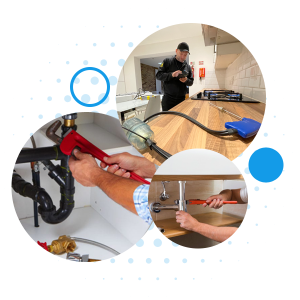
Let us make life easier with our range of domestic services and protection plans, designed to protect you, your family and your home.

We’re Pace Heating & Plumbing If you’re looking for boiler engineers in your area, then you’ve come to the right place. All our engineers are trusted & accredited Gas Safe registered professionals. We only higher the best. Get in touch today!